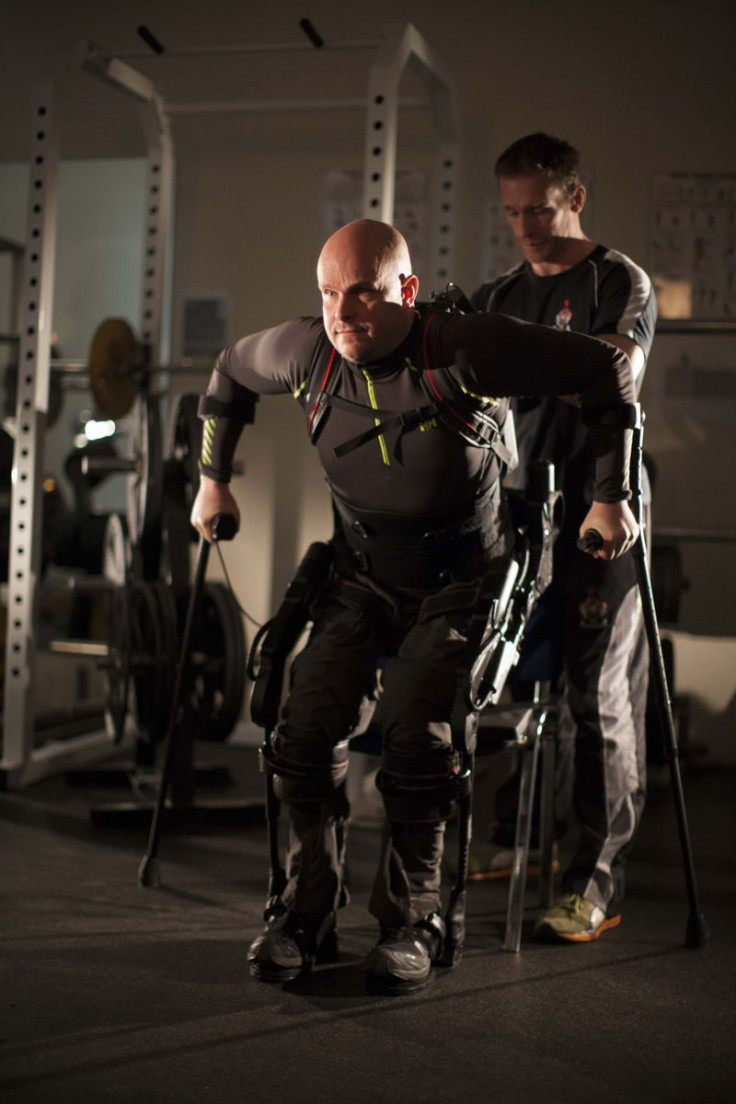Completely Paralyzed Athlete Regains Voluntary Control With 'Robotic Exoskeleton' At UCLA

A team of scientists at the University of California, Los Angeles (UCLA) have designed a new paralysis therapy in the form of a bionic suit that helps completely paralyzed patient walk again. The robotic exoskeleton, dubbed “Ekso,” lets the patient voluntarily moves his or her legs muscles.
Recently, 39-year-old Mark Pollock became the first paralyzed man to wear the bionic suit and regain control of his leg muscle. The former athlete lived without a vision for almost 10 years, before he accidentally slipped off a second story window in 2010. Pollock remained completely paralyzed for almost four years before finally taking thousands safe steps after adorning the bionic suit during the five-day physical training session at UCLA.
According to the team of researchers at UCLA, Pollock has regained enough voluntary control of his legs to be able to use the device for further enhancement of his mobility. In addition to the physical session using the bionic suit, Pollock had to undergo a non-invasive spinal stimulation technique during the training. The technique helped improve Pollock's muscle movement, muscle tone and cardiovascular function.
“Stimulation improved the coordination patterns of the lower limb muscles resulting in a more continuous, smooth stepping motion in the exoskeleton,” the scientists explained in a statement. “These stepping sessions in the presence of stimulation were accompanied by greater cardiac responses and sweating than could be attained without the stimulation. Based on the data from this case study, it appears that there is considerable potential for positive synergistic effects after complete paralysis by combining the overground stepping in an exoskeleton.”
The method used by the UCLA team, for the first time, is able to deliver painless stimulation to help people with chronic paralysis. However, the scientists clear that does not actually make the person “walk again” by himself or herself, since there is no completely paralyzed person, who has been known to walk without the aid or proper suit or stimulation.
© Copyright IBTimes 2025. All rights reserved.





















